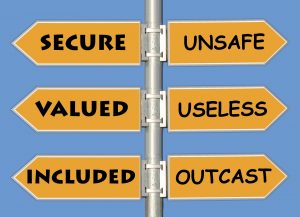2.2 Learning to Read with a Purpose
In these early stages of close reading, it is unnecessary to immediately find an analytical angle or identify the author’s overall purpose. At the beginning of your close reading, your greatest asset is time; therefore, you should slow down. Analyzing a text is a multi-stage process; finding evidence from a text is the very beginning of that process. The tools we introduce in this chapter will not help you if you do not give yourself the time needed to apply them properly.
By the end of the chapter, you will be asked to write a brief paragraph wherein you reconstruct what you’ve identified as the author’s complex argument, but at this early stage of the chapter, we need to gather evidence with which we can begin that reconstruction.
You should not jump immediately to your thesis; instead, you need to gather complex evidence by reading slowly with a pen in hand. You should take this time to annotate the text you are reading with your observations and initial interpretations.
For now, annotating what you are reading is enough—note interesting, confusing, or repeated things. When your task is to analyze a text, resist the need to jump in and begin drafting your thesis right away. Instead, to ensure you will eventually make an argument of adequate complexity, you should devote the time necessary to examine the text thoroughly.
To examine a text closely, you should:
- Annotate your experience
- Take notice
- Be granular
1. Annotate your experience

You will always begin by reading with a pen in hand, writing in the margins, underlining, highlighting, and otherwise marking the text if you own the text or by taking notes on a separate piece of paper if you are borrowing the text.
You can draw arrows in the margins to link different parts of the text to follow the author’s logic and argument. If you are reading online, you should habitually annotate your reading experience in some way.
You can do this on paper or with a digital text editor or PDF editor, which allows you to highlight and make notes or comments. Hypothes.is is a free general purpose web and PDF annotator that you can use for that purpose.
2. Take notice
During your first reading of a text, you should look for elements that jump out at you that you think are interesting or puzzling or may need more attention in a second reading. Underline or highlight words you do not understand, then seek out definitions for those words. If you encounter a new word, it is likely that the word is significant to the central message or theme of the text.
3. Be granular
Reading critically requires being granular. It is not enough to flag whole sentences or even whole paragraphs. You must get down to the level of the word. Begin by looking for some straightforward clues:

a. What’s interesting? What’s strange?
What words and phrases catch your attention in your first reading? This may take the form of repetitions; if a word or phrase is repeated, it is likely central to the author’s purpose.
b. What words or phrases are new to you?
You will probably encounter words or phrases you have never read or heard. You may also encounter facts or concepts you are learning for the first time. That’s great! Make a note of them and then look them up, or seek out additional information.
c. What patterns are present?
What elements of the argument repeat? A common pattern is the use of synonyms or words that are similar thematically. If there are several synonyms or thematic terms, the author is likely focusing on a specific idea or argument that can be conveyed using these words. You might also consider larger sets of words. For example, if an author is using verbs like “flow” and “poured,” nouns like “ocean” and “river,” and adjectives like “wet” or “fluid,” you might note that there are a lot of water-related words. Three or more words in a list of synonyms or thematically related words or phrases probably indicate a pattern.
d. What contrasts or opposites are present?
Are there words that are opposites or words understood to be contrasts of one another? The author may use these to establish the main argument by comparing points or establishing a counterargument. It may also be that the author is offering a more nuanced approach to a subject, so it’s important to look for subtle or implied contrasts that are not as stark as good/bad or black/white. For example, an author might use the words “infantilize” and then later “adult”—while the author does not juxtapose the words side by side, the two words are opposites and may be clues about the author’s larger argument.
As you mark up your text and make notes, remember there is no such thing as too much data at this phase. The more information you have, the more nuanced your reading will be and the deeper your understanding of the text. You should try to compile exhaustive lists of at least 7-10 interesting words, 7-10 definitions of new words, 7-10 lists of synonyms, and 7-10 contrasts.
Reminder: Do not jump into an argument; you do not need to explain what anything means. Just gather as many observations and potential pieces of evidence as you can.

